As promised in my last post, today I will show you some key positions from my epic battle with Freddy van der Meij in the Bryntse Gambit. The game was played online at GameKnot, with a time control of 3 days per move. I posted the PGN yesterday in the PGN viewer, so that readers who just want to play the game through could do so. Today I’ll be going over the game in a quiz format, for anybody who resisted the temptation to play through the PGN yesterday.
For me, the game brought out the best and worst sides of correspondence chess. The best side is that you can really analyze the moves to your heart’s content, and you never have to blame time trouble.
The worst side is that for me, at least, it’s almost impossible to tell “when to say when.” You always want to analyze a little bit deeper, and you’re constantly afraid that you have missed some little wrinkle six moves deep that is going to change the evaluation. Not only that, you are living with the game (and the suspense!) for days at a time, instead of getting it over with in a few hours. My wife told me that I was impossible to live with for the month it took me to play this game. I had to promise her never to do that again, and in truth I am not tempted. I am glad to leave this game as my one and only foray into correspondence chess online.
So, shall we begin? 😉
Dana Mackenzie — Freddy van der Meij
Game Knot, 2009
1. e4 c5 2. f4 d5 3. Nf3 de 4. Ng5 Nf6 5. Bc5 Bg4?! 6. Qxg4! …
Black to move.
This is not a quiz position, just the obligatory pause to gloat over my (or actually, Arne Bryntse’s) queen sacrifice. Now let’s move on.
6. … Nxg4 7. Bxf7+ Kxf7 8. Be6+ Kc6
Here I have to make a confession. When I wrote about this variation for Chess Life in March 2007, I presented it as the ideal anti-computer opening. The reason, I argued, was that White’s compensation for the sacrifice is too deep for a computer; it lies in an initiative that will last for 20 or 30 moves, deeper than any computer can analyze. I felt that this was a triumph for human intuition over brute-force calculation.
However, I may have been wrong. When I went over the game with Rybka yesterday, I wanted to see what it thinks about the queen sac. After 25 minutes of analysis, it gives a slim advantage to Black: 0.40 pawns in the 8. … Kc6 variation, and 0.36 pawns in the 8. … Kc7 variation. To me, this is a sign that computers are really “getting it.” It’s a big change from Fritz 7 and Fritz 9, which gave Black more than a one-pawn advantage (although in fairness to them, I don’t think I ever let them analyze for 25 minutes).
For people who insist on using computers as oracles of truth, this is also a sign that the Bryntse Gambit really is sound. But I was happier in the old days, when the computer gave a completely erroneous assessment that Black is up a pawn, and it was up to good old human intuition to say that it ain’t so.
9. Bxg4 e6 10. Nc3 Na6 11. a3 Qd4
Quiz position 1. White to move.
Until this point we have been following Mackenzie-Pruess, Reno 2006, but 11. … Qd4 takes the game into new territory, and so now I had to make my first real decision. What candidate moves should White consider? What would you play?
The game continued 12. Nxe6 Qd7, and already we have another big decision.
Quiz position 2. White to move.
If Freddy’s move 11. … Qd4 was a little bit unexpected, this retreat was a lot unexpected. It seems surprising for Black to put his queen on the same diagonal as White’s bishop, but for the moment the bishop is unguarded and the knight has no good checks, so the knight is pinned. Black’s idea is to bring his rook to e8 and take on e6. Defending the knight with f5 has to be somewhat suspect, because it is easily undermined with … g6.
Besides, the whole idea of this variation is for White to take the initiative. Is there any way to do that?
I’m going to insert a little of space here to avoid giving away the answer.
La la la la la
la la la la la
la la la la la
…
OK. The game continued:
13. d4! …
As the game shows, I think that this is very nearly a refutation of Black’s 12th move. Perhaps the most surprising thing to me is that the silicon oracle fails to see it! After all, the point is hidden “only” nine moves deep, so Rybka ought to be able to be able to evaluate this move correctly.
Let me add that, of course, I did not see White’s 22nd move at this point, even with three days to analyze. Even in correspondence chess there is a role for intuition. I felt that this move had to be played — it was the only move consistent with my philosophy of the opening. As I mentioned in the PGN yesterday, I didn’t find anything actually wrong with 13. Bh3 (and Rybka evaluates it as even), but 13. d4 was just too delicious to resist.
The game continued:
13. … ed (If 13. … cd 14. Ne2 Bc5 15. N6xd4+ wins the material back, and if 14. … Kb6 15. N2xd4 White has more than equalized, as Black’s forces are scattered and his king is exposed.)
14. Bf3+ Kb6 (The big choice for Black was between 14. … Kb6 and 14. … Kd6. Rybka says that Freddy made the right choice, and that Black is equal. Rybka is wrong on the second point, though perhaps not on the first.)
15. Nd5+ Kb5 16. Nc3+ Kb6 (As mentioned in my PGN notes, I was hoping to tempt Freddy into 16. … Ka5, but he didn’t bite.)
17. Nd5+ Kb5
Quiz position 3. White to move.
Should White just play 18. Nc3+ with perpetual check and call it a day? Or is there something else that White can try?
On this one I think the first move is fairly easy to spot, but the followup is not. Give yourself some time and see if you can find a way for White to get a clear advantage.
La la la la la
la la la la la
la la la la la
…
OK, hopefully that’s enough space.
The game continued 18. c4+!! Kxc4 19. Ne3+ Kb5 (Around this point Black has to start dodging checkmate threats left and right. The first one is 19. … Kb3?? 20. Bd1 mate. This begins a long phase of the game where Black actually doesn’t have to make many hard decisions. Most of the time he only has one move that even survives.)
20. a4+ Ka5 21. Nc4+ Kb4
Quiz position 4. White to play.
Now comes the move that blew my mind when I first saw it. You have to see this coming back in quiz position 3, otherwise you don’t get full credit. I also think this is the move that somehow Rybka overlooked when it mis-evaluated the position after 13. d4! as being equal.
La la la la la
la la la la la
la la la la la
…
And the move is 22. Ne5!! You might wonder how I found this move. The answer is that I spent hours looking for a win and not finding one after 18. Bd5. In these lines, the most dangerous idea for White seemed to be maneuvering my knight to c4 and e5. All this time I just assumed that I had to protect the knight on e6.
But one thing you should always do, when you see a sequence of moves that doesn’t quite work, is to try the same moves in a different order. (I’ve given a ChessLecture on this theme.) And suddenly it became obvious! There was no need to defend the e6 knight, and I could get my knight to e5 one tempo faster! Here is what I wrote in my notes (I kept voluminous written notes on the whole game so that I could remember what I was thinking):
“Ai-ai-ai!! If we change the move order, it’s practically a forced win.”
As it turns out this was a little bit too optimistic, because I missed Black’s 25th move. But still, yes, White is winning.
After 22. Ne5!! the game continued 22. … Qxe6 23. Bd2+ Kb3 24. Bc3!
This quiet move, too, had to be foreseen back on move 18. Black is forced to give back his queen to avoid checkmate.
24. … Qxe5+ 25. fe Be7!
A very good move. Black is willing to give back more material in order to end White’s attack. By the way, Freddy’s defense in this game was just amazing, and I could put together another whole quiz (probably a harder one) based on finding his moves.
26. Kd2! (Continuing to play for mate. No credit for 26. Bxb7?, after which Black is at least equal and maybe even better.)
26. … Bg5+ 27. Kxd3 Rhd8+ 28. Ke4 … (Now White’s king is going for a walk, too!)
28. … Rd4+!
Quiz position 5. White to move.
Should White take the exchange or not?
Absolutely inspired defense by Freddy! After being batted around for so many moves by White’s pieces, which were nipping at him like mosquitoes, the lion finally roars! He says, “I can play this game, too!”
I don’t actually know what the right answer to this quiz question is. You could say that I finally cracked under the pressure of Freddy’s stubborn defense, because I decided to take the exchange here. In our post-mortem, Freddy said that I violated one of my own rules for playing the Bryntse Gambit (as I explained in my ChessLecture), which is “Don’t cash in too soon!” In other words, White should not race to get back his material as soon as possible. Almost always, if he keeps the pressure up, he will win back even more material in an even better position later on.
So why did I break my rule? Well, one reason is that I thought I had the position worked out by force to a winning endgame. And technically speaking, I was not wrong. However, the endgame did prove to be a more difficult win than I thought.
Second, I thought that after the alternative 29. Kf5! I was not really gaining anything and I was potentially getting my king into trouble. I thought Black’s best answer was 29. … Be3, and I completely missed the winning rejoinder 30. Ra3+ Kc4 31. Ba5!! threatening mate on c3. Just as I said above, Black is now compelled to give up even more material under worse circumstances than on move 29.
However, after 29. … Bd2 I think there is nothing better for White than to grab the exchange, perhaps after throwing in a check on a3. And perhaps White is better here than in the line that I actually played; Rybka certainly seems to think so. A key point is that in the line I played, White doesn’t actually get to keep the exchange.
However, I still like the line I chose! It’s more forcing, even if White’s advantage is less. It’s a tough call.
So here is the way the game went: 29. Bxd4 cd 30. Kxd4 Rd8+ 31. Bd5+ Kc2
Now White’s problem becomes apparent: Black threatens … Nb4 0r … Nc7 winning the pinned bishop. But I had an answer prepared.
32. Ra3! Bd2!
Quiz position 6. White to move.
I expected Black’s 32nd move. By now I was getting used to the fact that on every move Freddy would present me with the absolutely most difficult defense. How does White organize his scattered pieces and prevent … Nc7 or … Nb4?
La la la la la
la la la la la
la la la la la
…
The answer is 33. Rc3+! I still thought I was winning here, although from my written notes you can see that I was nervous: “I think I’ve looked at everything. I really think so. It’s scary because if there’s even one thing I haven’t looked at, I could be dead. But such is life…”
Freddy replied, as expected, 33. … Bxc3+ 34. bc Nc7 35. c4 Ne6+ 36. Ke3 Nc5. All of this is pretty forced, but now came a decision. Should I defend the pawn on a4, or charge ahead? Well, you can probably guess what I did. Defense is useless for White in this position, because Black’s king has now been transformed magically from a fugitive into a powerful attacking piece. My only hope now is to take advantage of the fact that he is so cut off from the rest of his army. In particular, Black’s pawns are sitting like plump little apples on the seventh rank, and there is no one to defend them…
37. Rf1! Kc3! (Reconnecting the king with his army is more important than chasing the a-pawn. On 37. … Nxa4 38. Kd4 White’s passed e-pawn is too strong.)
38. Rf7 Re8 39. Kf4 … (Trying to provoke Freddy to move his knight from c5 — but he won’t budge.)
39. … Kd4 40. Rxg7 h6 41. Kf5!? (As discussed in the PGN, I don’t think that 41. Rh7 is any better, although it’s very tricky.)
41. … Rxe5+ 42. Kg6 h5
Quiz position 7. White to move.
We’re now deep into the endgame. I think that White is still winning, but it’s turned out to be way harder than I ever anticipated. Here I finally cracked and played my first definite blunder of the game. What do you think is the best way for White to play for a win?
What happened in the game was an unexpectedly abrupt conclusion. I played 43. Bxb7? a5! 44. Bd5?! (44. Bf3 was a better try but it’s still very problematic whether White can win) Nxa4. And now it suddenly dawned on me that if I try to win back the pawn with 45. Ra7 Nb6 46. Rxa5, I have just walked into a pin after 46. … Nxc4.
There was an amusing moment here caused by our different assessments of the position. Discouraged by the fact that I had blundered away my chance at a “masterpiece,” I was just going to bail out to a draw with 45. Ra7 Nb6 46. Rxa5 Nxc4 47. Rb5 Nd6 48. Rb4+ Kxd5 49. Rh4, winning Black’s last pawn. A sad and pathetic way for the game to end, with White groveling this way after playing so wonderfully earlier. But what happened was that I played 45. Ra7 and offered a draw. Freddy immediately accepted — not because of the line I just mentioned, but because he thought that after 45. Ra7 Nb6 46. Bf7 White still had a slight advantage (though probably not enough to win). I looked at that line, but I thought Black was completely equal after 46. … Rc5!
Anyway, what White should have played in quiz position #7 was 43. h4! I looked at this for a long time and came up with the following line as best play for both sides (and Rybka basically agrees): 43. h4 a5 (43. … Nxa4 is also a very real option, which I will leave for readers to look at) 44. g4! (the point) hg 45. h5 Re2! 46. h6 Rh2 47. h7 g3 48. Kf5 Nxa4 49. Rg4+! Kc5 50. Kg6 (a cute rearrangement, but…) b5! and now I was very unsure whether I could actually stop Black’s pawns after 51. Rxg3. It turns out that both Fritz and Rybka agree that White has an important improvement: 51. Bf7!, which prevents Black from taking on c4. White’s advantage according to Rybka is about +2 pawns.
This all seemed way too complicated to me, and I thought that 43. Bxb7 would be a simpler way to win. If the b-pawn is the big threat, why not get rid of it when I can? But the only way for White to win was to throw himself fearlessly into the complications. I had done so for the previous 42 moves, but on this move I failed.
Finally, I have one more quiz question for you!
Quiz question 8. Find thirteen times in this game when Black could have been checkmated if he had played the wrong move. (I already gave you the first one, on move 19. Can you find twelve more?)
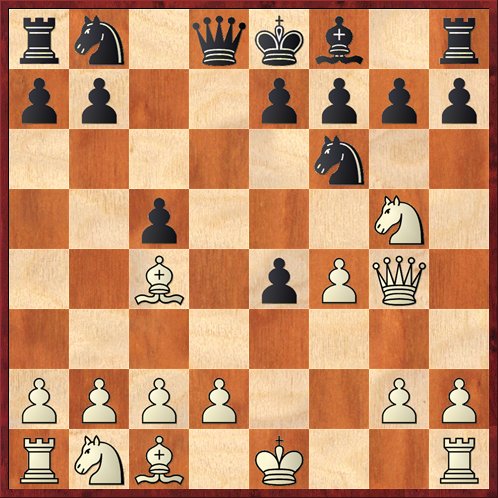
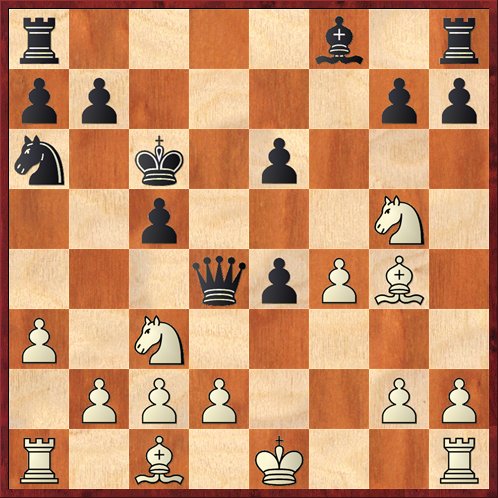
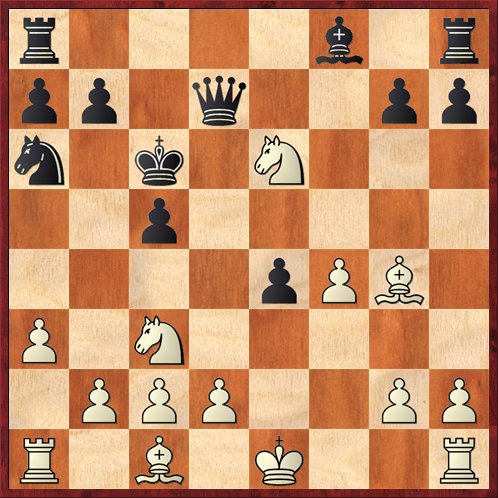
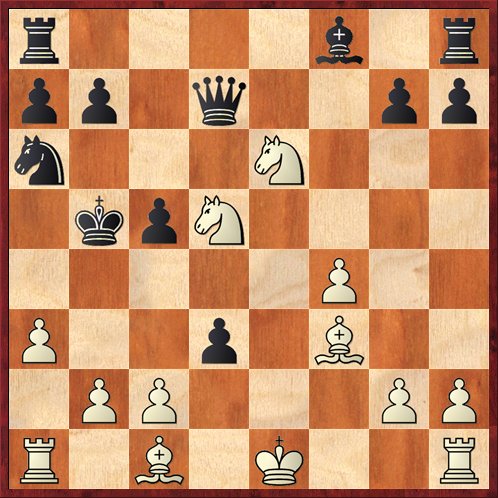
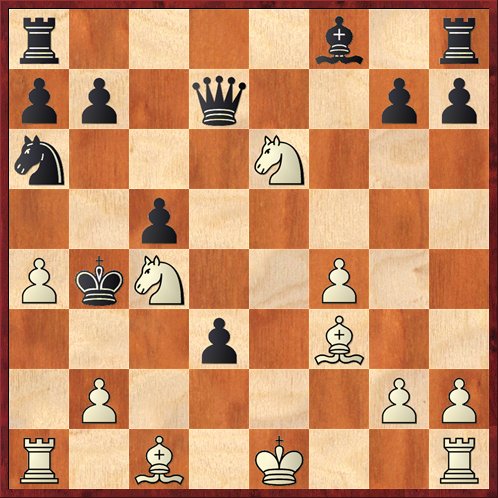
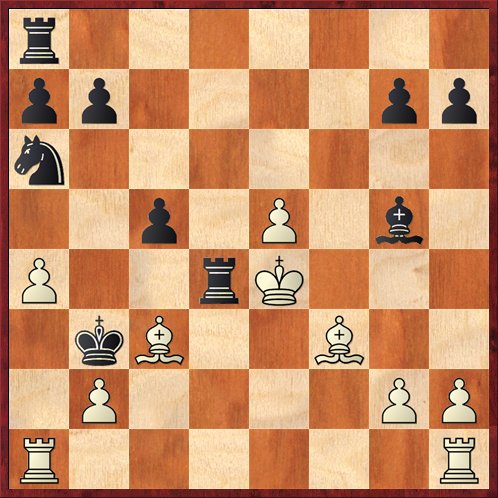
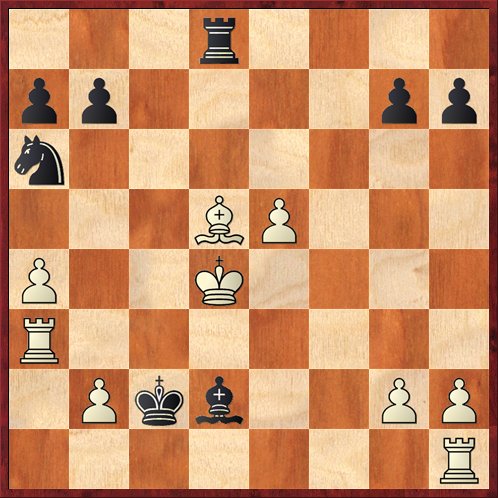
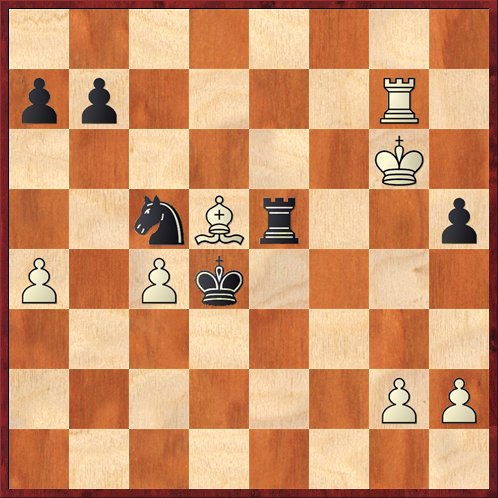



{ 6 comments… read them below or add one }
I follow your blog since… a long time ago… but this post was simply amazed!!
Thank you very much!
Oh, sorry… I mean amazing!!
Hi Mario,
I had no trouble figuring out what you meant! It really makes me feel good to get this kind of comment. After I spent so much time working on the last two posts, I was actually wondering, “Who cares?” But now I know — Mario cares!
I care…
I care too, Dana. And I agree with my countryman, this post is amazing! Kudos again!
It was really epic indeed.
And i still think that if you play this on a real board face to face that with our current expierance wiht the gambit you should win every time and that is with both colors.
So unsound as it looks it is a sound a it can be for me 🙂